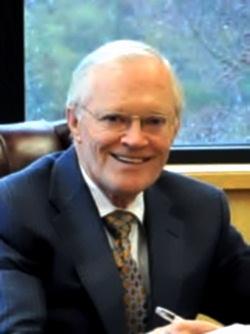An Empire Rising Again?
Seven centuries before Christ, the prophet Daniel interpreted King Nebuchadnezzar’s dream about a great image picturing four kingdoms that would dominate the Middle East (Daniel 2). The fourth kingdom is widely recognized as the Roman Empire, with its final phase (the feet and toes) composed of a loosely adhering mixture of iron and clay. This end-time phase with links to the Roman Empire will involve a federation of ten kings that forms just before Jesus Christ returns to this earth (Daniel 2:40-–45). In Daniel 7 these same four empires are seen as “beasts.”
Students of Bible prophecy know that the ten horns on the fourth beast picture ten revivals of the Roman Empire—nine of which have already occurred in Europe. The “little horn” refers to the dominant role a religious organization (the Roman church) has played, and will play, in the revivals of the Roman and Holy Roman Empire.
Revelation 13 foretells the-- appearance of an end-time beast (a political figure)- and a miracle-working religious leader who points peoples of the world toward this European leader. Prophecies in Revelation 17 link these same two individuals and organizations to Rome. The woman (a powerful church with global influence) is pictured as “riding” [supporting and influencing] the political beast. Revelation 17:12–14 states the ten horns of this end-time beast “are ten kings” who “give their power” (surrender sovereignty) to the beast for a short time just before Christ returns. The ten kings and the beast will have “one mind” (pursue a common policy). Other prophecies refer to this end-time European beast as the “King of the North” (Daniel 11:40–44)—that will be led by Germany (or Assyria—see Isaiah 10:5). The emergence of this European beast power will have serious negative consequences for modern Israelite nations (Hosea 5:5; 8:8–9, 14).
Prophetic Developments in Europe
In light of these ancient Bible prophecies, it is remarkable to see what is occurring on the continent of Europe today. European leaders make no secret of their links to the heritage of the Roman Empire. Diplomat Robert Rothschild, an aide to Belgian Foreign Minister Paul-Henri Spaak, recalled in a 1996 BBC Television documentary the striking comment Spaak made during the signing of the 1957 treaty that formed the European Economic Community. “Spaak turned to us and said: ‘Do you think we have today been putting the first stone of a new Roman Empire, and this time without firing a shot?’ We all felt like Romans that day” (“The Decline and Fall of Rome.” TIME Magazine, June 13, 2005).
Roman popes have promoted a united Europe, just as popes of the Middle Ages crowned and formed alliances with emperors of the Holy Roman Empire. While many wonder how the prophecies about ten kings relate to the 27 nations of the European Union, the answer could emerge in the months ahead. Numerous articles point out how the financial crisis in Europe has opened fissures in the EU—between affluent northern nations and indebted nations in the south plagued with mounting unemployment. Britain appears on the verge of leaving, and France could. This would seriously reduce the number of nations in the EU.
Former German Defense Minister Joschka Fischer and others are proposing that the 17 members of the Eurozone should become the “core” of nations that move ahead to form a deeper monetary and political union. Another idea sees the EU president selecting ten representatives from the 27 EU member states to form a council to lead Europe (spiegel.de, November 18, 2011). German Foreign Minister, Guido Westerwelle recently called leaders from ten European nations—the “Berlin group”—to discuss the future of Europe (Presseurope, June 20, 2012). Their idea of giving sweeping control over the EU to an unelected bureaucrat who would be the equivalent of a modern day European emperor is viewed by opponents as an attempt to “go back to the days of the Holy Roman Emperor” (Daily Express, May 2013). The calls for “ten” nations to become the core of a “United States of Europe”—and ten leaders to guide Europe—could fulfill ancient prophecies about ten nations or leaders who give their power to an end-time beast that will arise in Europe.
Another significant development in Europe is that the financial crisis has “catapulted” Germany into the dominant position in Europe. Germany has the largest and strongest economy in Europe, which means it also has money to lend to financially strapped members of the EU. However, Germany has indicated it will set conditions for those loans. German Chancellor Angela Merkel has also stated that other nations of Europe need to surrender aspects of their sovereignty (control of their national budgets, etc.) to form a deeper economic and political union. One observer has commented, “Europe’s paymaster [Germany] wants to be in the driving seat again” (Boyes, Roger. London Times, “Britain is left out of talks on the EU’s future,” June 22, 2012). German sociologist Ulrich Beck warns that Germany is ready to become the “schoolmaster of Europe,” and that talk about the imminent collapse of the euro and the EU could bring dramatic changes in Europe that were formerly “unthinkable” and “result in the birth of a potential monster” that could surprise the world (German Europe, pp. 3, 28). Bible prophecies in Revelation 13:3 have long warned this will happen in Europe as we approach the end of the age.
One European Monarch?
Ideas are also circulating that what Europe needs is the return of a European monarch. European nations have a long history with monarchies—in fact many still have monarchs who function as ceremonial figureheads. In Berlin, the Germans are rebuilding the former Hohenzollern palace of the Prussian kings and German monarchs (“Germany lays new foundations for Berlin Palace rebuild,” dw.de, June 12, 2013). The great-great grandson of the last German Kaiser has stated that modern Germans would benefit from the “moral guidance” of a restored monarchy (The Local, June 16, 2013). Austrian monarchists have promoted the idea of restoring the Hapsburg throne for a central European monarchy (earthtimes.org, November 12, 2007). The former heir to the Austro-Hungarian Empire, Otto von Hapsburg, whose siblings are active “public servants” in several European countries, indicated before he died in 2011 that there may yet be a role for the Austro-Hungarian throne and the crown of Charlemagne in the future of Europe.
Given this history, it is not surprising that Karl-Theodor zu Guttenberg (of the Hapsburg line—and married to the great-great granddaughter of Otto von Bismarck) became a rising star and Minister of Defense in Germany before his precipitous fall. He is currently a “distinguished statesman” at the prestigious Center for Strategic and International Studies with excellent contacts in Washington and Europe—with plans to return to Germany in a yet-to-be-determined role (Die Welt, March 14, 2013). In light of these developments in Europe, we need to remember Jesus’ command to “watch” for prophetically significant events that will indicate the end of the age and His return are near!






